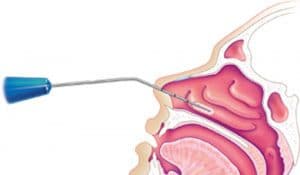Inferior Turbinate Reduction
Inferior Turbinate Reduction
Nasal cavities have three types of turbinates located laterally in the nasal cavities. The nasal cavity may become obstructed due to enlarged turbinates, a common occurrence with chronic allergies. The reduction of the inferior turbinate’s dimension improves the passage of airflow.
There are several methods of turbinate surgery. The two most common procedures used are the submucosal resection and reduction using radio frequency. When performed in an operation room, these reductions can be combined to the inferior turbinate fracture to reposition them with the lateral portion of the nasal cavity.

The submucosal resection of the inferior turbinate is performed under general anaesthesia in the operation room and can be combined with other nasal procedures.
A small incision is made in the mucous of the inferior turbinate, which is composed primarily of bone. Shaving a section of bone from the inferior turbinate reduces its size, facilitating proper airflow. This traditional approach is more invasive and painful than the newer techniques.
The radiofrequency of the inferior turbinate is typically performed in private offices under local anaesthesia or intravenous sedation. An end-piece specially made for this purpose is inserted in the soft tissue of the turbinate and radiofrequency energy (heat) is directed under the surface of the mucous.
This technique uses heat to create lesions within the submucosal tissue of the turbinate. Healing ensues and the healing process provokes a reduction in the turbinate volume. This procedure takes approximately ten minutes and is much less invasive and uncomfortable than the submucosal technique.
Recovery is faster and with fewer risks. One session is often needed. However, it is possible that subsequent sessions may be necessary.
Do you have questions about sleep disorders
Call us toll free at 1-(855) 218-5186. Our team of sleep specialists will answer your questions. Consultations are free and can be done online or in person.
Testimonials
Satisfied customers
“The team at Dorma answered all of my questions and were very helpful in helping me understand my different options. I now get a full nights sleep!”
“I’ve had undiagnosed sleep apnea for most of my adult life. Thanks to the team at Dorma I can now sleep. Thank you again!”